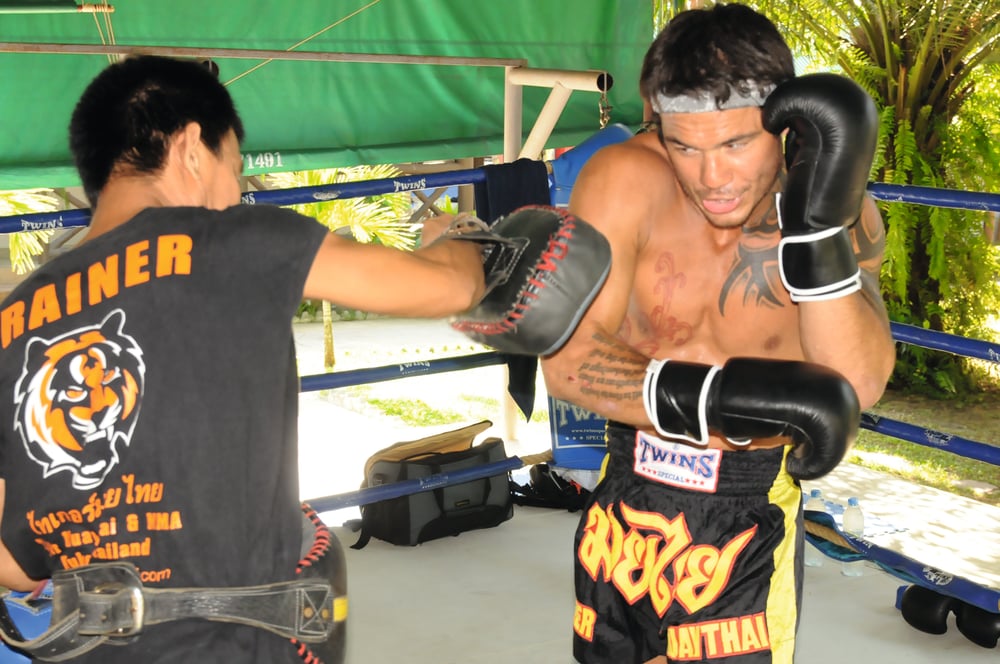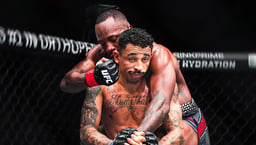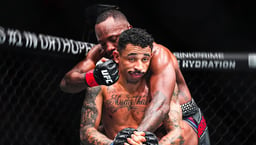
Issue 084
January 2012
With Japan currently counted out, mixed martial arts is fighting back across Asia and Oceania in the most unlikely places with exciting results
Need to Know
NAME RADEEM RAHMAN
AGE 24
STARTED September 2011
TEAM Evolve MMA
DIVISION Flyweight
STYLE Muay Thai, BJJ
RECORD 1-0
Having established itself firmly in the consciousness of the mainstream in the Western world, mixed martial arts is moving into new territories. Traditional strongholds have been the US, UK, Canada, Australia, Brazil and Japan – but now other countries in the East are slowly starting to catch on.
Despite the continued success of premier promotion Dream, Japanese MMA has been in a steady state of decline since the demise of Pride. But elsewhere in Asia the sport is enjoying unprecedented growth and bringing in new fighters and fans every day.
There, live UFC events tend to take place early in the morning and are often either broadcast on obscure channels or not at all, meaning that the organization has struggled to gain a foothold across Asia, although it is absolutely huge in the Philippines.
However, interest in MMA is increasing and some world-class camps are springing up in surprising places. Thailand’s association with stand-up fighting makes it an attractive destination for mixed martial artists and Phil Baroni, Roger Huerta, Jake Shields and Mike Swick have all spent time at Tiger Muay Thai in Phuket. While Alistair Overeem, Jon Olav Einemo and Sergei Kharitonov often traveled to Golden Glory in Pattaya for their training camps.
Team Lakay Wushu in the Philippines is home to no fewer than four of the reigning champions in the country’s most prestigious promotion, the URCC. Roy Docyogen, Kevin Belingon, Honorio Banario and Eduard Folayang are all based down in Baguio and use an unorthodox wushu style which has seen them enjoy considerable success on both the domestic and international stage.
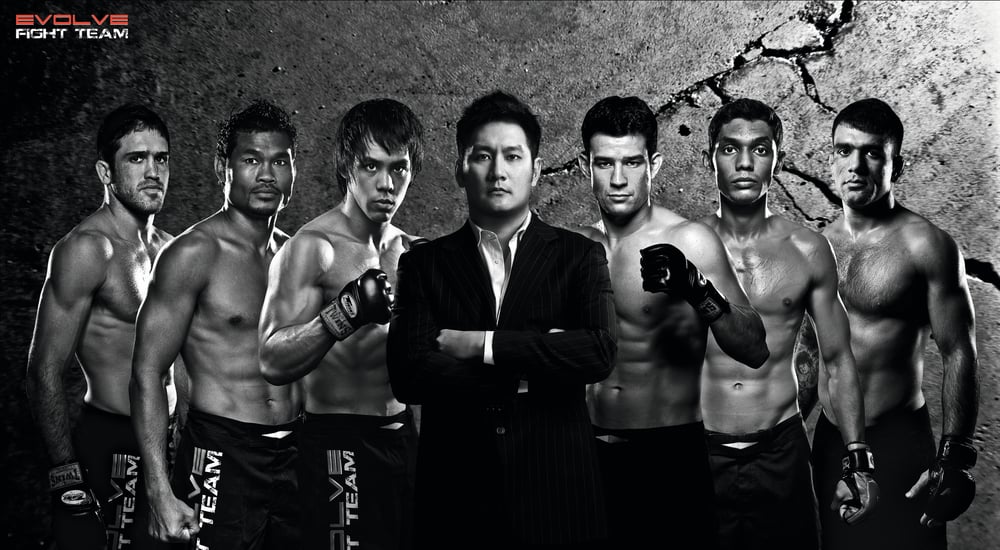
EVOLVE MMA
As MMA snowballs across the East, the camp that has perhaps enjoyed the most interest is Evolve MMA, based in Singapore. A state-of-the-art facility founded in 2008, it’s home to a number of world-class fighters, including Shinya Aoki and Rafael Dos Anjos.
Fighters who have come to visit, such as Rich Franklin and Renzo Gracie, have been blown away by the quality of the premises, the trainers and fight team. And, perhaps not surprisingly, Evolve MMA is home to some of the best Muay Thai fighters of the past two decades, including Lamnammoon Sor Sumalee, Namsaknoi Yudthagarngamtorn, Anuwat Kaesamrit and Orono Wor Petchpun.
Head boxing instructor is none other than former WBA super featherweight champion Yodsanan Sityodtong, while the BJJ coaches include multiple world champions such as Rafael ‘Gordinho’ Correa De Lima, Leandro Issa, Zorobabel Moreira and Alex Silva.
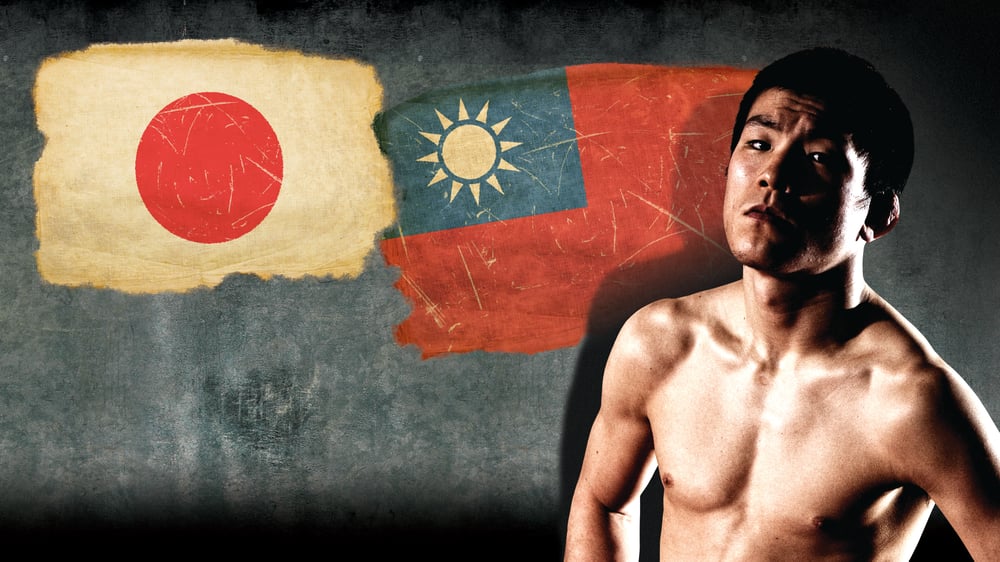
It is a formidable team but it wouldn’t be possible if Evolve MMA was not a profitable business. Its success owes much to the explosion of interest in MMA in Singapore. Founder and chairman Chatri Sityodtong is originally from Thailand and with a blue belt in BJJ, a background in Muay Thai and an MBA from Harvard he’s got all the credentials necessary.
“I chose to set up Evolve MMA in Singapore because it is the best city in Asia in terms of quality of life. Thailand has Muay Thai, China has kung fu, Japan has karate and Korea has taekwondo, but Singapore doesn’t have a history of martial arts so I am surprised at how fast mixed martial arts has grown here. I am not surprised how quickly Evolve MMA has established a reputation as being the best camp in Asia, though, because our instructors and fighters are the best in Asia.”
When it comes to finding mixed martial artists Chatri’s policy is to recruit fighters at the start of their career who he believes can become world class, with the help of his team of trainers. At present, his fight team includes Hong Kong’s Eddie Ng, who actually grew up in the UK and is 4-1, Brazilians Leandro Issa (9-2) and Zorobabel Moreira (5-1), and 3-0 Korean prospect Brian Choi.
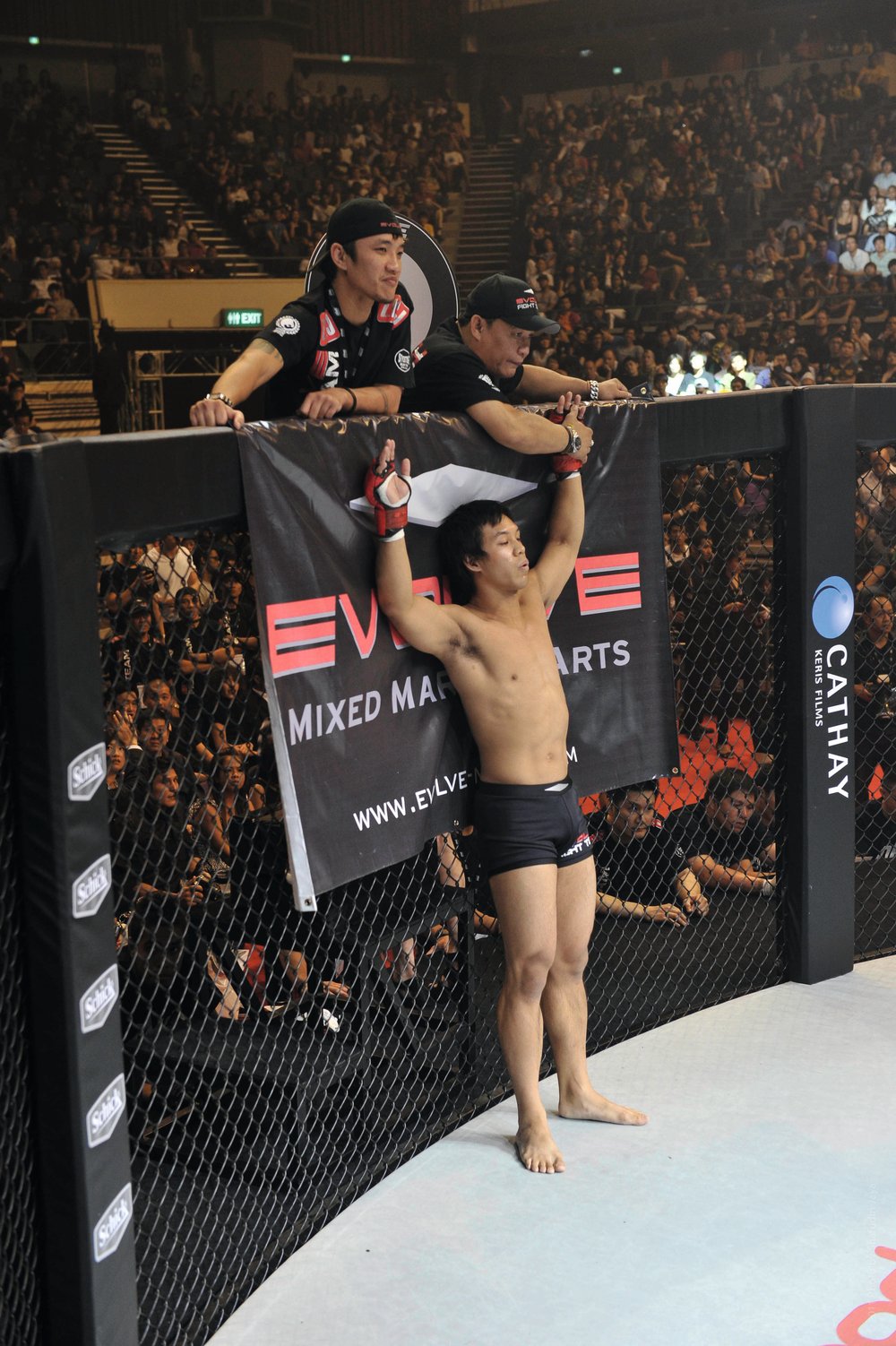
ONE FC
This select group of fighters has also signed with One Fighting Championship, the ambitious Singapore-based promotion, which is well on its way to becoming Asia’s equivalent of the UFC. However, as Chatri recalls, it was a debutant who stole the show at the inaugural One FC event, which took place in front of almost 7,000 fans at the Singapore Indoor Stadium in September.
Chatri said: “Radeem Rahman is a full-time member of the Evolve MMA fight team and Singapore’s first ever mixed martial artist. I was very nervous and scared for him before his fight at One FC because he was a big underdog in terms of martial arts skills and actual fight experience. I was thrilled and surprised that he won in the first round via TKO and I think it was truly a historic moment for Singapore, because now more Singaporeans will want to follow in his footsteps.”
Why has MMA in Singapore developed at a sufficiently rapid rate to support one of the most expensively assembled teams in the world? A demographic which includes a large number of British expats probably helps, but much is owed to the vision and efforts of Victor Cui.
As a senior executive at ESPN Star Sports, Cui started Martial Combat, a small-scale show which put on an incredible 12 events in the space of six months in 2010. As well as showcasing some of the region’s outstanding fighters such as Eduard Folayang and Kevin Belingon, as well as the likes of Moreira, Choi and Issa, it also helped introduce an entire new generation of fans in Singapore to the sport.
Putting on two shows per month, both on consecutive nights, is not a strategy typically associated with promotional success. But ticket sales were surprisingly brisk and made Cui, whose family is from the Philippines, realize the awesome potential which MMA possessed.
“I’ve been in the sports media industry for over 15 years with ESPN Star Sports, PGA Tour, the Olympics, the Commonwealth Games, and other events across the globe, and I’ve never seen anything like MMA before,” he admits. “Asia has been the birthplace and home for martial arts for the last 5,000 years. There are 3.9 billion people in Asia and yet many of them have not even heard about mixed martial arts yet.”
Cui describes Martial Combat as a “small pilot test project” and after the six-month season had finished he set about raising enough capital from foreign investors to start something far more ambitious. In July 2011, One Fighting Championship was officially launched and Cui left his role at ESPN Star Sports in order to become the CEO and owner of this brand-new promotion.
The first show sold out and was streamed live and for free on the internet, with Cui reluctant to fall into the trap of trying to sell pay-per-views without first establishing a fan base. At the time of writing, three shows in three countries have been confirmed in 2012, all in the space of three months. In February, One FC will be heading to Jakarta. In March it is back to the Singapore Indoor Stadium and then in April it will be the turn of Kuala Lumpur. Events in Seoul and Manila are also reportedly close to being confirmed in what would be the most ambitious first-year schedule in the history of mixed martial arts.
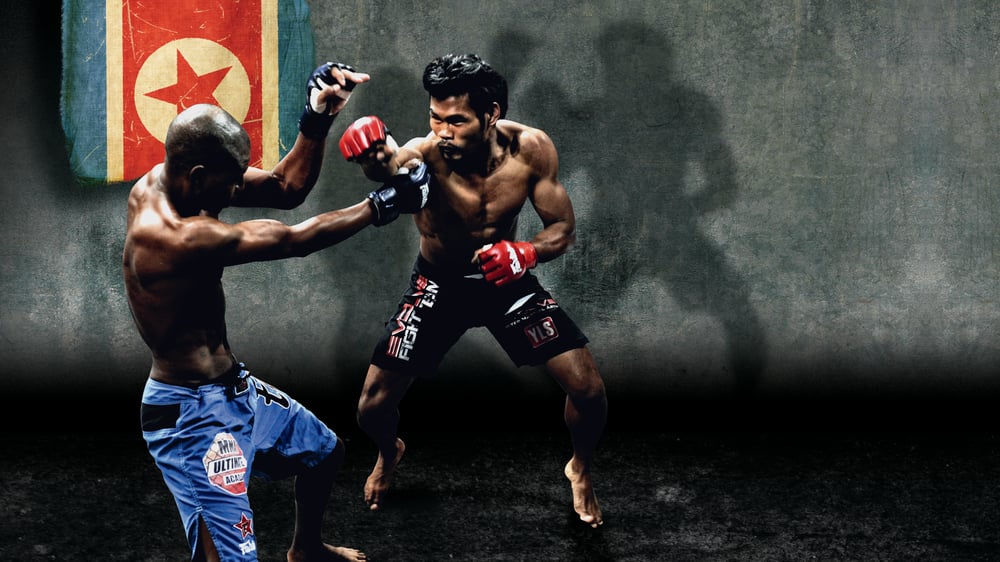
ASIAN MMA NETWORK
Cui has also been busy forming something called the ‘One FC Network’ – an association of stakeholders he believes will change the face of Asian MMA forever. “We are bringing together organizers, promoters, fighters, gyms… industry leaders from all over Asia are working together. This is the largest platform of MMA ever in the history of Asia, it’s a really exciting project. There’s a Chinese proverb ‘many hands make light work’ and that’s what the One Fighting Championship Network is about. It’s a distinctly Asian approach to business.”
Amongst the promotions already on board are Road FC in Korea, URCC in the Philippines, Dare Championship in Thailand and Cage Fighting Championship in Australia. Between them they will put on 35 events in 2012 and mixed martial artists within the One FC Network will be able to fight on any of them.
It’s an exciting concept and nowhere will the benefits be more palpable than in the Philippines. Filipino MMA has been going from strength to strength in recent years and the UFC has talked extensively about the possibility of promoting events there and even hosting a series of The Ultimate Fighter.
While people in the Philippines follow the UFC fanatically and happily throw their support behind fighters of Filipino decent, such as Brandon Vera and Mark Munoz, there is always going to be more interest in a home-grown hero and, at present, there are plenty of those.
That is largely due to the efforts of the Universal Combat Reality Championship (URCC) which has been putting on events all over the country for almost a decade. Some of their champions, such as Eduard Folayang and Eric Kelly, have gone on to star for One Fighting Championship and the URCC has effectively provided a breeding ground for the best Filipino mixed martial artists.
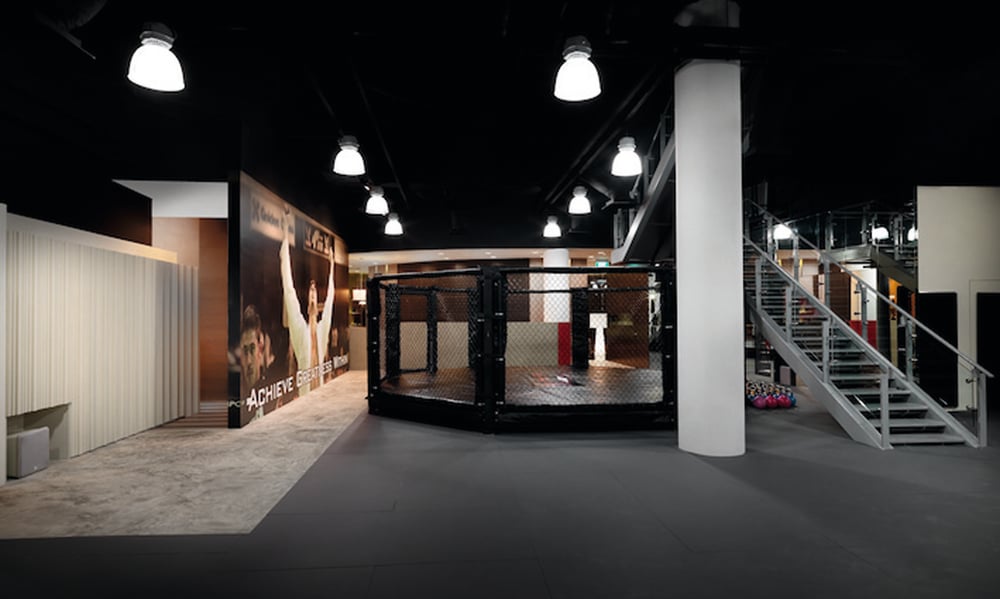
It is the brainchild of husband and wife team Alvin and Bubbles Aguilar and events have regularly been witnessed by big crowds of fight fans ever since the URCC’s inception. As Bubbles recalls: “The URCC started in 2002. Alvin has been a martial artist since he was young and always wanted to put on an MMA promotion having seen how the UFC was growing. At that time he was also a blue belt under UFC legend Royce Gracie himself and was also already known in the martial arts community in the country, so it was timely for him to stage an event. Our first show was held on November 23rd 2002, at the Casino Filipino, and we were shocked at the response. We had about 5,000 attendees and the place was packed... The rest, as they say, is history.”
That history is still being made by fighters who many believe have UFC potential. Roy Docyogen is 9-0, as is his Team Lakay Wushu teammate Kevin Belingon, and both hold URCC belts at their respective weight classes. Other URCC champions include Honorio Banario, who is 5-0, and Eric Kelly who is 6-0 with all his wins coming by way of submission.
How good these fighters will be is anyone’s guess but so far they have been extremely successful on the international stage with URCC welterweight champion Eduard Folayang, whose record stands at 10-1, leading the way. Unsurprisingly both Team Lakay Wushu and the URCC have signed up to the One FC Network and Bubbles is delighted to see URCC fighters representing the Philippines overseas.
“We are just very proud of how our fighters have evolved and how they can hold their own in the international arena,” she says. “We believe that Filipinos are born fighters because in everything we do, we work hard for it, no matter what the hurdles are. Eduard and Eric, along with our other URCC fighters work very hard to reach their goals. It also has something to do with us being patriotic. Filipinos take pride in representing their country which is why our athletes strive to make the country proud.”
Whereas the MMA scene in the Philippines is very much orientated around Filipinos, in Thailand it is foreigners who are leading the way. Tiger Muay Thai & MMA, Phuket Top Team, 301 Muay Thai & MMA, Golden Glory, and Legacy Gym are just some of the camps set up to cater for tourists.
UFC INVASION
UFC veterans Roger Huerta and Mike Swick are also in the process of constructing something called the ‘Nitor Muay Thai, MMA and Fitness Camp’ which will be opening in early 2012. There is also a brand-new promotion in Thailand called Dare Championship which has been putting on small-scale events in Bangkok to widespread acclaim.
However, the growth of MMA camps is not a truly accurate barometer as to the development of the sport because their customers are almost all tourists rather than local people. To see real grass-roots MMA in Thailand you need to travel around the universities and witness some of the small-scale dojos and primitive fight clubs which young Thai men are starting to set up.
Unsurprisingly, given how sophisticated the training is at some of the established camps in the region, these fighters have struggled in competitive MMA. Traditional martial arts have not always provided as effective a base in actual competition as their exponents liked to claim, but one man to have already registered a competitive MMA win is 22-year-old Shannon Wiratchai.
He has a background in judo and a Chinese martial art called baguazhang, and is part of a new generation of Thai martial artists taking an old-fashioned DIY approach to MMA. He told Fighters Only: “When I was in high school, I started learning baguazhang and one of my seniors was a Thailand vale tudo champion in a previous time and everybody in our group loved to train in MMA style. He introduced me to one judo master who is 6th dan and I practiced with him, he was also great in MMA too; 70 years old and he can still make me tap!”
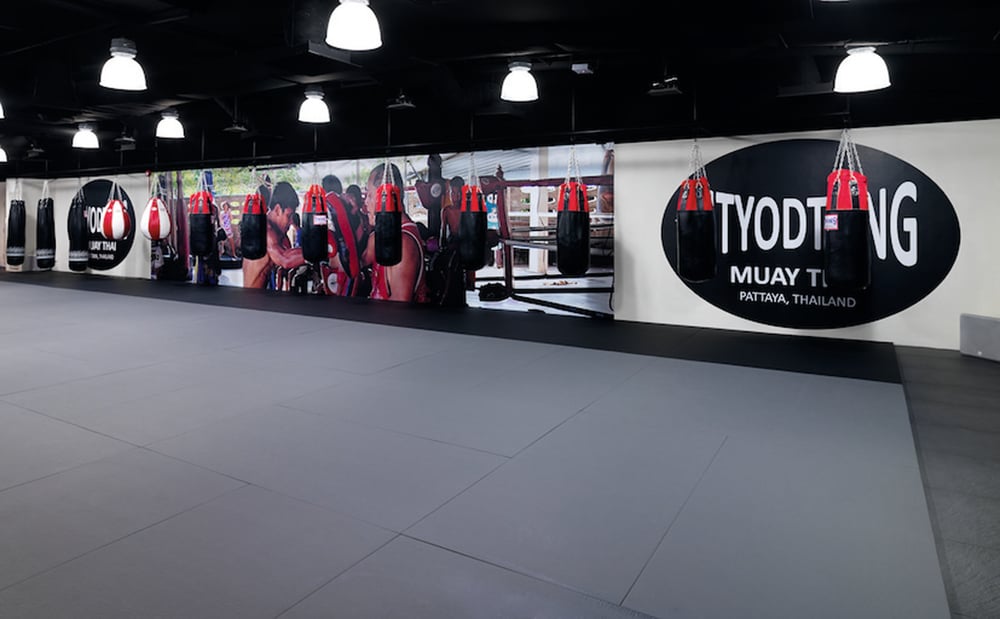
MUAY THAI MASTERS
Wiratchai made a successful debut at Dare Championship 2/11 defeating fellow Thai fighter DK Panjabutra by unanimous decision. The skill-set he displayed was a little crude and it was far from a technical contest but it was still a promising start for the university graduate. The internationally renowned MMA camps seldom, if ever, have a paying customer who is actually from Thailand but they do provide an outstanding infrastructure of resources. As more young men like Wiratchai start to experiment in MMA and realize the limitations of the traditional techniques they have been teaching and learning they will soon realize they have some fantastic resources right on their doorstep.
Thailand is also home to the best stand-up fighters on the planet, although they tend to come no bigger than 155lb. The culture of Muay Thai means there are thousands of fighters with world-class striking skills who would be only too willing to start learning MMA if the financial rewards for doing so started to become a little more tangible.
Tiger Muay Thai & MMA has a bantamweight called Ngoo Ditty who has a blue belt in BJJ and a professional record of 4-2. Yodsanan Sityodtong of Singapore is also turning his considerable talents to MMA and let his hands do the talking at One Fighting Championship’s inaugural event, winning via second-round stoppage.
What is clear is that while BJJ rules the roost in Brazil and wrestling is the predominant base for MMA in the US, in Asia almost all the fighters come from a stand-up background. This makes for some entertaining fights as Muay Thai experts, wushu practitioners and sanda (Chinese kickboxing) specialists clash inside the cage relying on their individual skill-set rather than a specific gameplan.
These ingredients make the Asian MMA scene a very interesting place indeed and one which is full of exciting and explosive fighters with plenty of potential. Singapore, the Philippines and Thailand are all at very different stages of development, but slowly and surely they are all falling in love with the fastest growing sport on the planet.


